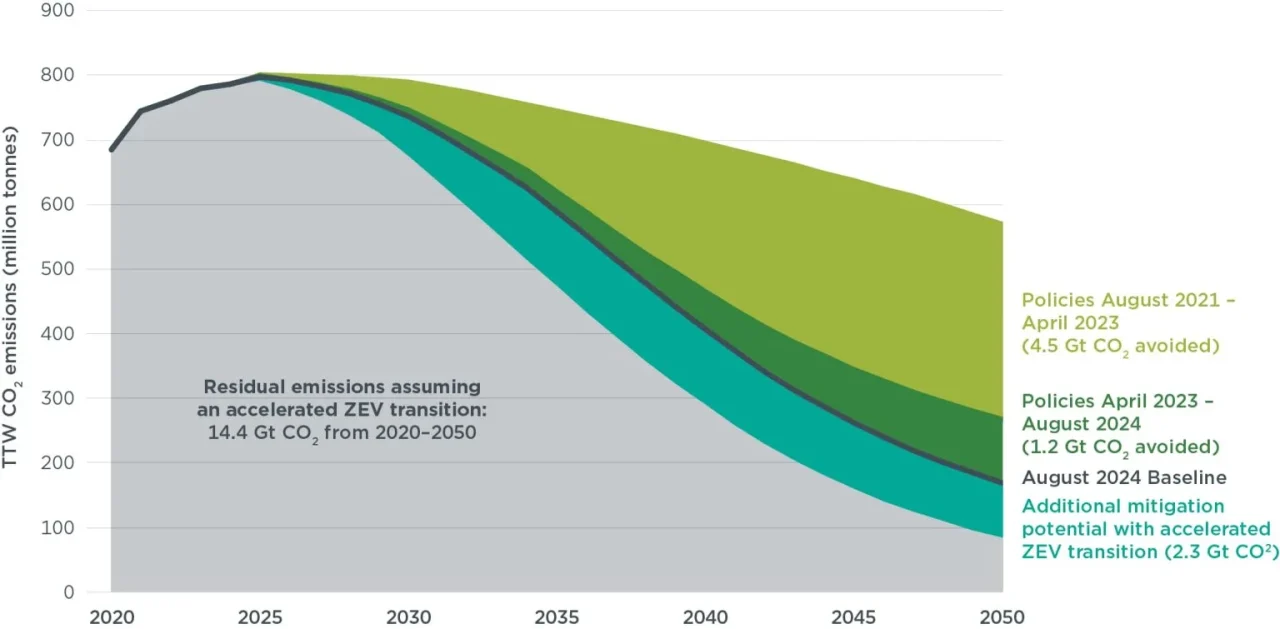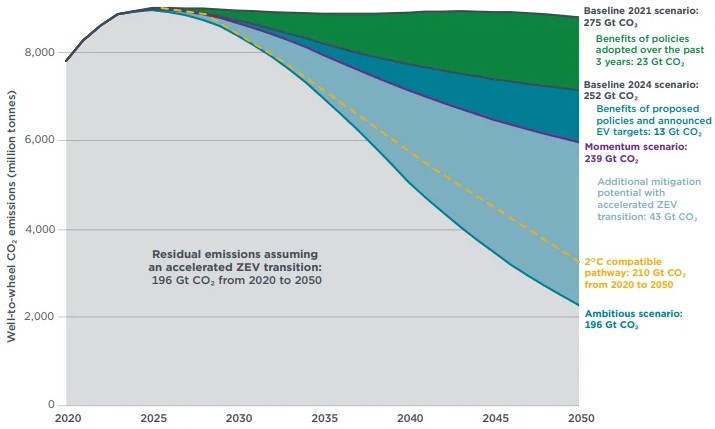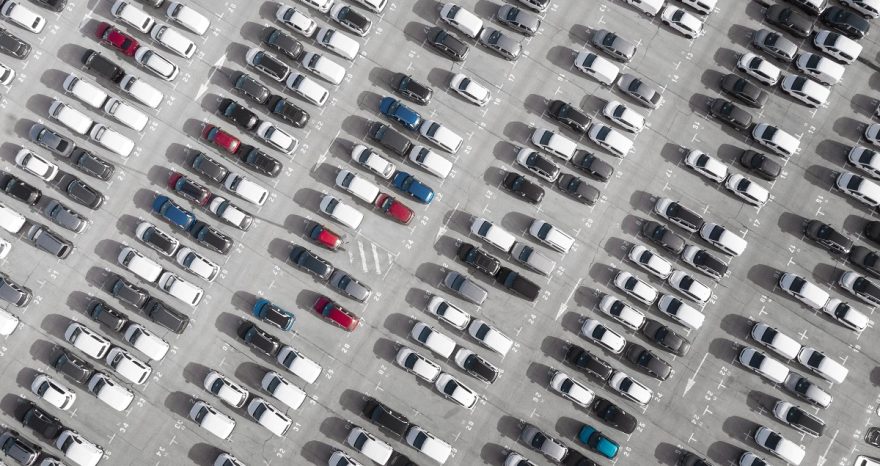Road transport emissions globally are expected to reach their peak by 2025, even under conservative policy scenarios. This pivotal shift, as reported by the International Council on Clean Transportation (ICCT), hinges on policies already enacted through 2024.

Global Road Transport Emissions may peak by 2025
Road transport emissions globally are expected to reach their peak by 2025, even under conservative policy scenarios. This pivotal shift, as reported by the International Council on Clean Transportation (ICCT), hinges on policies already enacted through 2024.
This change is especially significant for Europe, where transport remains the only sector with rising greenhouse gas emissions. Between 2013 and 2023, transport emissions in the EU increased by 14%, according to recent Eurostat data.
ICCT’s three scenarios for Global Emissions

The ICCT’s January 14 report outlines three potential future scenarios for global road transport emissions:
- Baseline 2024: Includes policies adopted up to August 2024.
- Momentum: Adds proposed policies and targets currently under consideration.
- Ambitious: Aligns with the Paris Agreement’s climate goals.
Under the Baseline 2024 scenario, cumulative well-to-wheel emissions from cars, vans, and trucks could total 252 billion tons of CO2 (GtCO2) between now and 2050. This figure is a notable reduction from the 275 GtCO2 projected in 2021, reflecting the impact of policies implemented over the past three years.
In the Momentum scenario, cumulative emissions are further reduced to 239 GtCO2—13 GtCO2 less than Baseline 2024—but still fall short of the Paris Agreement’s threshold of 210 GtCO2 for 2020-2050.
The Ambitious scenario achieves compliance with the Paris Agreement, cutting emissions to 196 GtCO2 by 2050.
Europe’s road transport emissions outlook

In Europe, road transport emissions are also expected to peak in 2025 at 800 million tons of CO2 under the baseline scenario. By 2035, emissions could decrease by 25% from this peak.
Progress under the EU Green Deal has been substantial, closing 73% of the emissions gap needed to align with the Paris Agreement. Policies implemented between 2021 and 2024, including stricter standards for cars, vans, and heavy-duty vehicles, are projected to avoid 5.7 GtCO2 emissions by 2050.
Accelerating the transition to electric mobility could reduce emissions by an additional 2.3 GtCO2, according to ICCT estimates.
Challenges ahead
Despite these positive trends, challenges remain. “The road transport sector in Europe is at a historic turning point,” says Felipe Rodríguez, Deputy Director of ICCT Europe. “However, today’s good news comes with a critical warning: weakening current CO2 targets for car and van manufacturers could jeopardize emission reductions, widening the gap to meet climate goals and undermining Europe’s role as a global leader.”
This warning is particularly relevant as several European countries, including Italy, push for revisions to Green Deal regulations, especially the proposed phase-out of internal combustion engines by 2035.
For more details, download the full ICCT report here.












